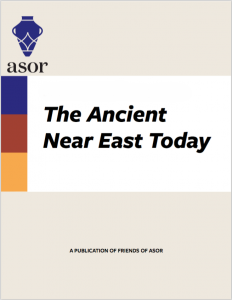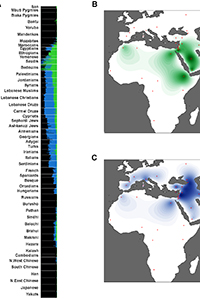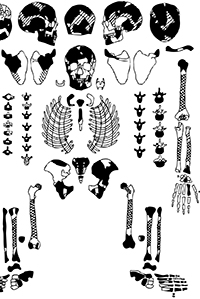

June 2015
Vol. 3, No. 6
Welcome to The Ancient Near East Today, Vol. III, No. 6! This month we are pleased to take you from childhood in Sumer to adulthood in Assyria, with stops to consider Israelite genetics and American high school curricula.
We begin with an urgent report from ASOR’s Syrian Heritage Initiative on the site of Palmyra, recently occupied by ISIL. Aaron Brody and Roy King present a provocative examination by of how modern genetic studies are beginning to inform us regarding the ancestry of the Israelites. Vitali Bartash then looks at childhood in Sumer and Tracy Spurrier reviews the questionable health of Assyrian queens. Amanda Podany looks at the unhappy state of the Near East in American high school curricula. Finally, with the summer excavation season in full swing we look back at past work by students funded by ASOR Scholarships.
As always, please forward articles from The Ancient Near East Today to family and friends, post links to Facebook, and be in touch with the editor. Remember, being a Friend of ASOR is free!
Genetics and the Archaeology of Ancient Israel
By: Aaron J. Brody and Roy J. King
Who were the ancient Israelites? This question has been endlessly debated but almost no attention has been paid to their biology. That is now about to change, and review of modern DNA studies gives hints to the wealth of information that might be gleaned.
READ MORE
 The Life and Health of Assyrian Queens
The Life and Health of Assyrian Queens
By: Tracy L. Spurrier
When great Queen Yaba’ of Nimrud passed away, she left a curse to those who would dare disturb her final resting place. Despite her warning, excavations from 1988 to 1990 in the northwest palace of King Assurnasirpal II in the ancient city of Nimrud revealed the existence of hers, and a number of other royal tombs dating to the Neo-Assyrian period (ca. 900-600 BC).
READ MORE
 Reaching out to the Public about the Ancient Near East
Reaching out to the Public about the Ancient Near East
By: Amanda H. Podany
The terrible human toll and the recent destruction of archaeological sites have kept the Near East at the top of the headlines. But just what are students really being taught about the ancient world? According to state curriculum standards, just about every child in the United States learns about the history of the ancient Near East at some point.
READ MORE
 Children in Ancient Sumer: How Much Do We Know?
Children in Ancient Sumer: How Much Do We Know?
By: Vitali Bartash
Children constitute a large portion of any society. But the meaning of childhood varies from one society to another. This results in specific habits of child caring and raising, their legal status and overall life conditions. Childhood is more than just a biological stage in human development, it is also a social and political concept.
READ MORE




